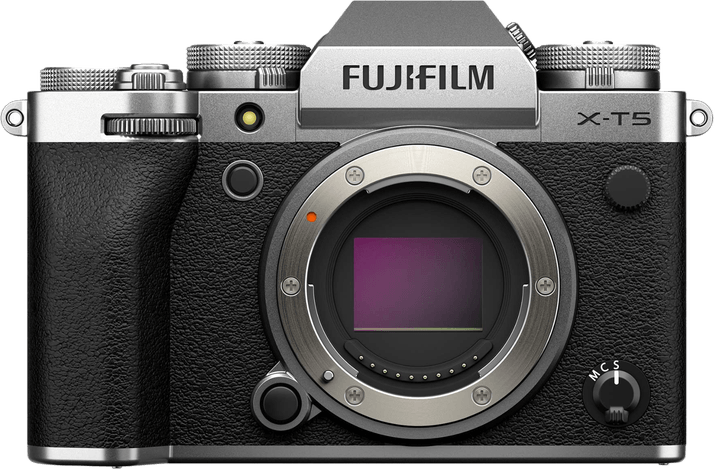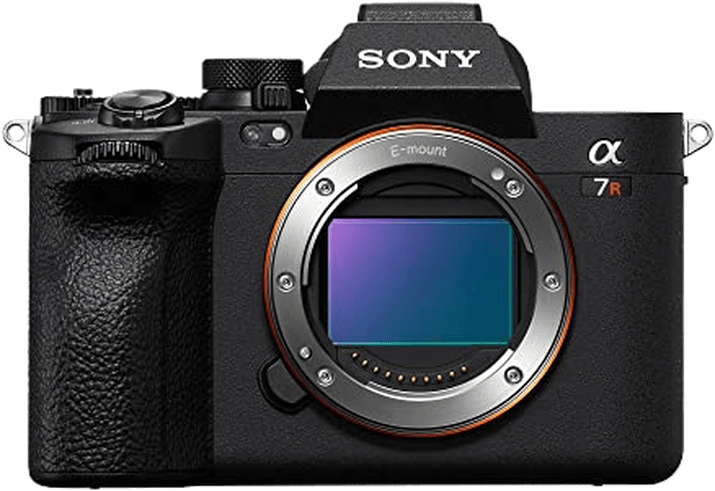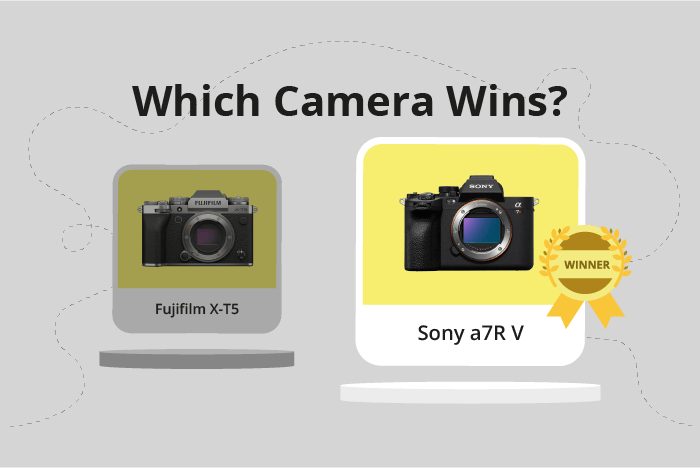Fujifilm X-T5 vs Sony a7R V Comparison
Fujifilm X-T5

Sony a7R V

The Sony a7R V emerges as the winner with a score of 85/100, while the Fujifilm X-T5 trails with a score of 81/100. Both cameras share similarities as mirrorless cameras released in 2022, with the Fujifilm X-T5 announced on 02/11/2022 and the Sony a7R V on 10/26/2022.
The Sony a7R V outperforms the Fujifilm X-T5 with its higher score, but it comes at a heftier launch price of $3999 compared to the Fujifilm X-T5’s $1699. The Fujifilm X-T5, however, boasts a lighter and more compact design, weighing 557g and measuring 130 x 91 x 64mm, compared to the Sony a7R V’s 723g weight and 131 x 97 x 82mm dimensions.
Taking into account the scores, prices, and design differences, the Sony a7R V is the better choice for those seeking top performance, while the Fujifilm X-T5 offers a more budget-friendly and portable option without sacrificing too much quality.
Fujifilm X-T5 vs Sony a7R V Overview and Optics
The Sony a7R V outperforms the Fujifilm X-T5 in optics, scoring 85/100 compared to the X-T5’s 81/100. Both cameras share several features, including a CMOS sensor, image stabilisation, and a fast processor. The Fujifilm X-T5 has the X-Processor 5, while the Sony a7R V has the Bionz XR processor.
The Sony a7R V’s advantage lies in its higher megapixel count of 61, compared to the Fujifilm X-T5’s 40 megapixels. This higher resolution allows for capturing more detail and producing larger prints. Additionally, the Sony a7R V has a full-frame sensor and a DXOMARK score of 94, indicating superior image quality. The Fujifilm X-T5 has an APS-C sensor, and its DXOMARK score is not available as DXOMARK does not score Fujifilm cameras.
On the other hand, the Fujifilm X-T5 has a faster shooting speed of 15 frames per second (fps) compared to the Sony a7R V’s 10 fps. This makes the X-T5 more suitable for capturing fast-moving subjects and action photography. Both cameras use their respective brand’s lens mounts: Fujifilm X for the X-T5 and Sony FE for the a7R V.
In terms of optics, the Sony a7R V offers superior image quality due to its higher megapixel count, full-frame sensor, and higher DXOMARK score. However, the Fujifilm X-T5 is better for action photography with its faster shooting speed. Depending on the user’s needs and preferences, each camera has its strengths and weaknesses in the optics department.
Fujifilm X-T5 vs Sony a7R V Video Performance
The Sony a7R V emerges as the winner in the video capabilities comparison, scoring a perfect 100/100, while the Fujifilm X-T5 lags behind with a score of 87/100. Both cameras share some common video specifications, such as built-in time-lapse functionality, which is a useful feature for capturing stunning time-lapse sequences.
The Sony a7R V outshines the Fujifilm X-T5 with its impressive 8K max video resolution (7680 x 4320), which is significantly higher than the X-T5’s 6K max video resolution (6240×4160). This allows the a7R V to produce ultra-high-definition videos with more details and clarity. Furthermore, the Sony a7R V boasts a max video frame rate of 120fps, doubling the 60fps offered by the Fujifilm X-T5. This higher frame rate enables the a7R V to capture smoother slow-motion videos and better handle fast-moving subjects.
On the other hand, the Fujifilm X-T5 still delivers respectable video performance with its 6K resolution and 60fps frame rate. These specifications are sufficient for producing high-quality videos and meeting the needs of most users. However, the X-T5 falls short when compared to the superior video capabilities of the Sony a7R V.
In comparing the video capabilities of the Fujifilm X-T5 and Sony a7R V, the Sony a7R V stands out as the clear winner, excelling in both video resolution and frame rate. While the Fujifilm X-T5 offers adequate performance, those seeking the highest quality video should opt for the Sony a7R V.
Fujifilm X-T5 vs Sony a7R V Features and Benefits
The Sony a7R V wins the features comparison with a score of 87/100, while the Fujifilm X-T5 scores 85/100. Both cameras have several common features, including a touchscreen, flip screen, WIFI, and Bluetooth capabilities. Neither camera has GPS functionality.
The Sony a7R V outperforms the Fujifilm X-T5 in terms of screen size and resolution. The Sony a7R V has a 3.2-inch screen and a resolution of 2,100,000 dots, providing a sharper and larger display for users to view and compose their shots. This advantage allows for better image review and easier menu navigation.
On the other hand, the Fujifilm X-T5 still offers impressive features, albeit slightly inferior to the Sony a7R V. The X-T5 has a 3-inch screen with a resolution of 1,840,000 dots. While the screen size and resolution are lower than the Sony a7R V, the X-T5 still provides a high-quality display for users.
Considering the features of both cameras, the Sony a7R V emerges as the winner due to its larger and higher-resolution screen. The Fujifilm X-T5, while not as impressive in this aspect, still offers a high-quality display and shares many common features with the Sony a7R V. In the end, the choice between the two cameras will depend on the individual preferences and needs of the user, as both cameras provide a strong set of features for photographers.
Fujifilm X-T5 vs Sony a7R V Storage and Battery
The Fujifilm X-T5 wins the storage and battery comparison with a score of 76/100, while the Sony a7R V scores 73/100. Both cameras share common specifications, such as the number of memory card slots (2) and USB charging compatibility. They also accept SD/SDHC/SDXC memory cards.
The Fujifilm X-T5 outperforms the Sony a7R V in battery life, providing 580 shots per charge compared to the Sony’s 530 shots. This difference gives the X-T5 an advantage for longer shooting sessions without needing to recharge or swap batteries. The X-T5 utilizes the NP-W235 battery type.
On the other hand, the Sony a7R V supports CFexpress Type A cards in addition to SD/SDHC/SDXC cards, offering faster read and write speeds for high-resolution photos and videos. This feature could benefit users who demand quick data transfer rates. The a7R V uses the NP-FZ100 battery type.
Considering the storage and battery aspects, the Fujifilm X-T5 holds a slight edge over the Sony a7R V due to its longer battery life. However, the Sony a7R V offers additional storage capabilities with CFexpress Type A card support for users requiring faster data transfer speeds.
Alternatives to the Fujifilm X-T5 and Sony a7R V
Are you still undecided about which camera is right for you? Have a look at these popular comparisons that feature the Fujifilm X-T5 or the Sony a7R V:

